The Loudness War
There are many wars and many wars are worth fighting. There is much evil in this world gagging to be slain. The loudness war is one war not
worth participating in. For it will bring no benefit to your record. It is much better to teach the clueless of how to listen.
There are several things that make people perceive a song as better sounding over another.
- A louder version of the same song as is perceived as better sounding
- A version of the same song with added treble is perceived as better sounding
- Bass and treble gain along with a midrange dip is perceived as better sounding
Bands and producers of records are aware of these three facts and they exploit these facts, especially the the first two. They compress and clip to increase loudness and they add unnatural amounts of treble when mastering their records. There is one genre of music that is intelligent enough not to have participated in this loudness and treble war and for very good reason. That genre is the genre of Classical and Orchestral music. As I explain the flaws of the loudness war Classical music is a perfect and easy to comprehend example as to why one should not kill their records with hyper compression and treble boost.
Loudness
Compact discs have a certain amount of head room this headroom is the span of the quietest noise it can produce to the loudest noise it can
produce. This headroom is the space where dynamics in music can be expressed. In Orchestral music you might hear a quiet start by the string
section slowly getting louder and then the bras section comes in as the music turns in to a vigorous march but it will still get louder when the
orchestra hits the climax with a loud Orchestral hit with timpani's and everything.
In Contrast to this when you listen to modern CD’s the music is always hitting the roof of the headroom making the whole CD as loud as the
Orchestral hit this makes the CD sound very loud. This is achieved with an array of mastering processors. The Compressor makes quieter parts of
the song louder by reducing the Loudness of the louder parts of the song and then increasing the overall volume of the song now the loud parts
are as loud as they were before but the quieter parts are now almost as loud as the loudest parts. The next step is to use a limiter which
squashes the Loudness peaks down even further and more aggressively than the compressor with an infinite ratio after the make up gain increases
the volume of the whole song so the peaks hit the roof again the whole song is now even closer to hitting the roof of the headroom.
Now as a final step Comes the Clipping Clipping means that the peaks of the waveform in the music get literally clipped off this is achieved
when the songs volume becomes louder than the roof of the headroom allows. This causes the peaks of the songs loudest parts which now go past
the roof of the headroom to be chopped off leafing small square wave peaks this causes a degrading of the sound in exchange for added loudness.
Such clipping is standard nowadays. A a couple of decades ago sound engineers who even clipped a song by a microscopic amount would get the
death penalty for doing so, OK maybe they wouldn’t get the death penalty but they would get a good dressing down. The following wave samples
show the same peace of music after various dynamic processes.
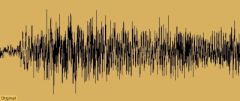
This is a unprocessed waveform it has a natural dynamic range with a quiet beginning see far left of waveform.
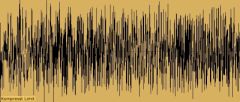
This is the same spice of music after heavy compression note how everything is louder and even the quiet parts have become nearly as loud as
the peaks.
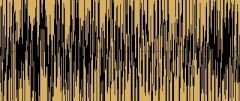
After compression the sound file was heavily limited making the whole clip even louder and all peaks are now approaching the headroom limit.

And finally the music clip was clipped which literally removed the ends of the waveform to allow the whole peace to be at maximum loudness even
the quiet intro is now as loud as the rest of the track and any dynamics are completely gone.
Treble
When listening to a classical or Orchestral record one notices that the instruments sound very much the way they would sound if you heard them life. If the frequency spectrum of a orchestra was analyzed on a RTA analyzer one could observe a slow decline in the volume of the treble frequencies as they go higher up. And the orchestra is a good indicator of how much treble should be in a recording if it is to sound natural. Because listeners of music perceive an increased treble range as sounding better many modern CD’s have an unnatural amount of treble content.
Why clip compress and treble boost if it degrades the sound
Everyone wants their music to stand out. And this causes a dilemma called the loudness war. People perceive louder as better everybody else's records are loud and because you want yours to stand out as much as everyone else's you have no choice but to also hyper compress and clip your tracks. Of course the same goes for the treble gain, everyone else's songs are sparkling with treble and if you don't do the same it will sound very dull by comparison. If people are used to listen to high treble levels they get desensitized to it and when they hear a more natural treble level it will sound very dull in relation.
The reality about compression and equalization
You should know that when your stereos volume is adjusted so that the average SPL (Sound Pressure level) of both the compressed and uncompressed
album is the same and you now compare the two, the quieter CD now sounds better. Al you have to do is increase the volume on your stereo to
compensate. The uncompressed CD has quiet parts and loud parts. This dynamic range gives the music live and expression. There are no clipped
waveforms and no intermodulation distortion. Excessive treble should not be added in the master studio if you like more treble turn up the
treble on your stereo.
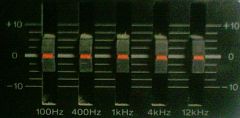
unequalized acoustic instruments have a decrease in high pitch volume due to the decreasing energy in the upper harmonics .
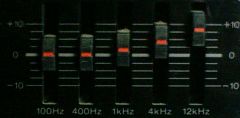
This is what most mastering studios do in order keep overtones as loud as the fundamental. this causes an unnatural high frequency response.
This kind of treble boost should be avoided in the mastering studio. The listener can ad treble on he's stereo if he wishes to do so.
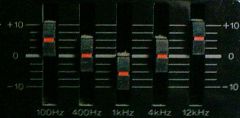
Smiley faces sound good and can be used on the listeners stereo system, but should not be used in the master Studio.
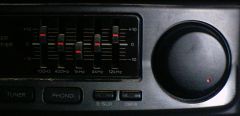
Music should not be clipped and over compressed nor should it be to trebley it should sound dynamic and natural in frequency response.
The listener can turn up the volume and create unnatural EQ settings on he's stereo. That's what stereo systems have volume controls and EQs for.



